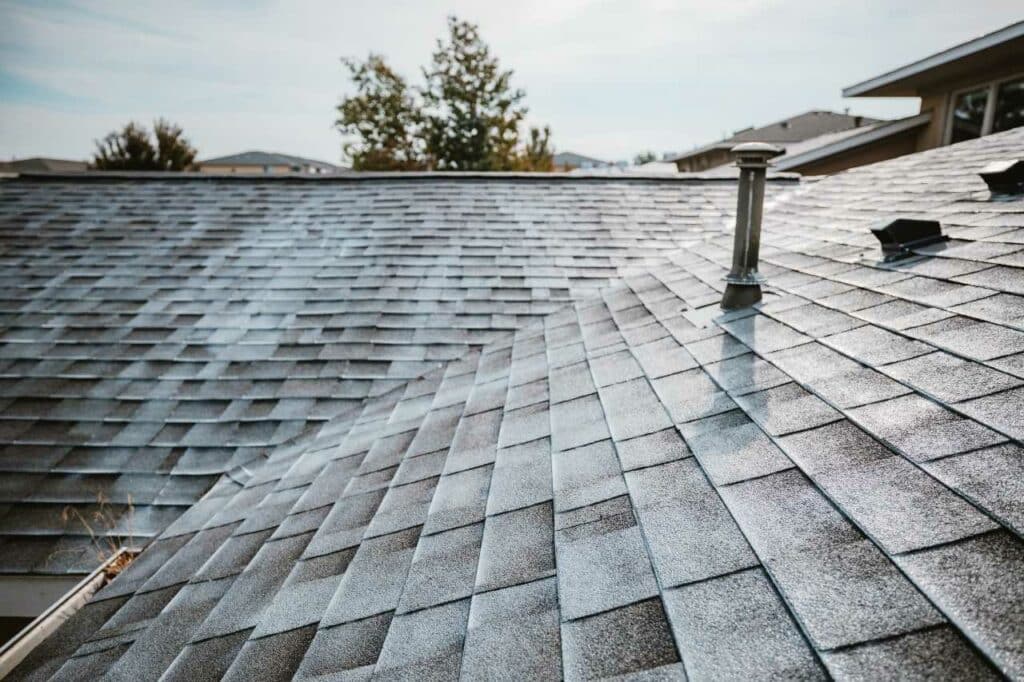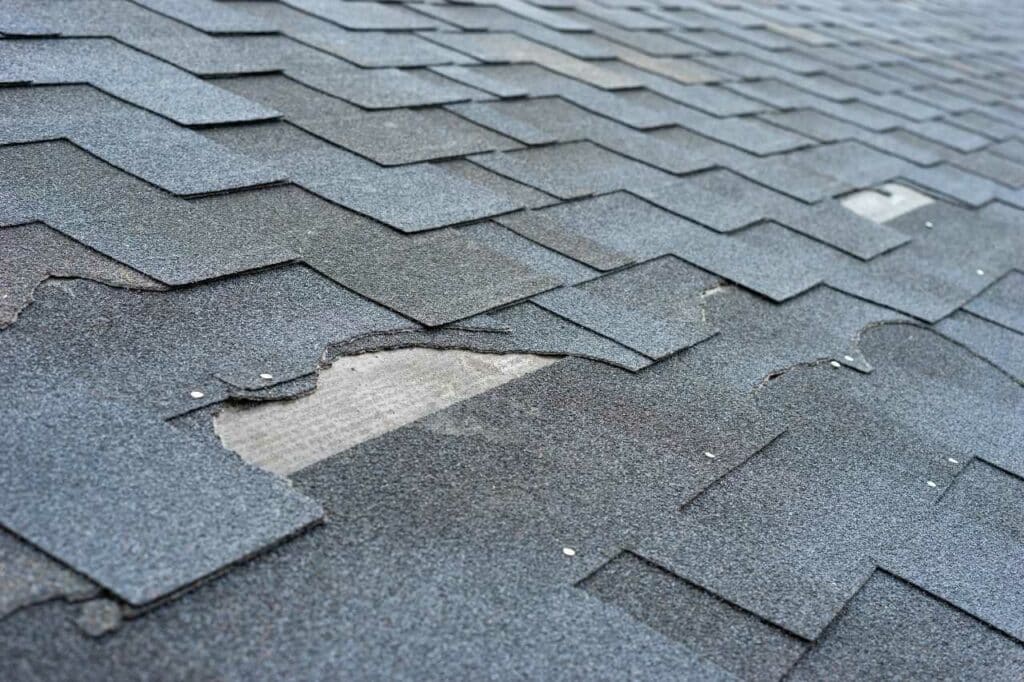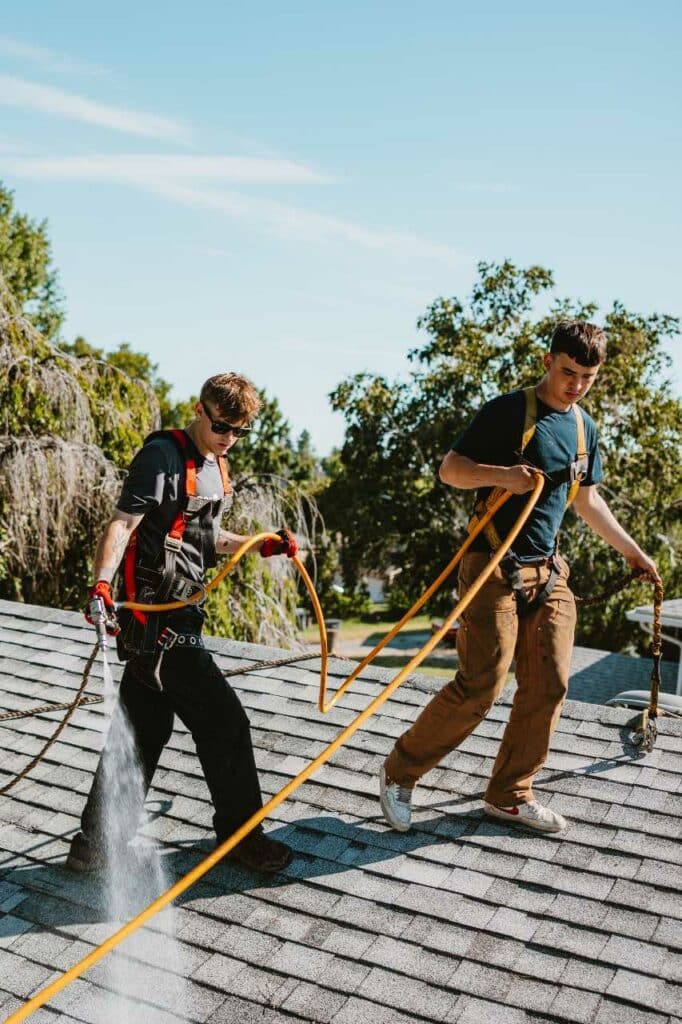Wind speed and roof damage are two terms homeowners never wish to hear together, especially if they reside in regions frequently battered by strong gusts, storms, or hurricanes. However, understanding the link between these key terms is essential. By discerning the potential damage various wind speeds can inflict upon roofing materials, homeowners, property managers, and those considering roof installations can make informed decisions about roof safety and longevity. Whether it’s the notorious hurricane winds or just a strong gale, being aware of how these speeds affect your roof is the first step toward proactive protection. In this article, we’ll delve into the relationship between wind speed and roof damage, offering insights to shield your home.

Wind Speed Basics: How Different Speeds Impact Our Homes
Wind speed is crucial in determining the potential risk of roof damage. To gauge the force of winds and their potential damage, we can refer to the well-established Beaufort wind force scale. Devised in 1805 by Sir Francis Beaufort of the British Royal Navy, this descriptive table categorizes wind speeds from a calm level of 0 to a devastating level of 12. Though the scale extends to 17 for tropical typhoons, levels 13 to 17 are primarily relevant in regions around China and Taiwan.
| Category Number | Wind Name | Speed (mph) | Description of Damage |
| 0 | Calm | 0 | Still winds. Smoke rises vertically. |
| 1 | Light winds | 1-3 | Smoke drift shows wind direction. |
| 2 | Light breeze | 4-7 | Wind can be felt on the face; flags ripple. |
| 3 | Gentle breeze | 8-12 | Flags wave. |
| 4 | Gentle breeze | 13-18 | Paper and leaves scatter. |
| 5 | Fresh breeze | 19-24 | Small trees sway; whitecaps form on waves. |
| 6 | Strong breeze | 25-31 | Umbrellas are hard to use; large branches on trees move. |
| 7 | Moderate gale | 32-38 | Trees sway; walking in the wind is difficult. |
| 8 | Fresh gale | 39-46 | Twigs and branches break off trees. |
| 9 | Strong gale | 47-54 | Roof tiles blow off buildings. |
| 10 | Whole gale | 55-63 | Trees are uprooted. |
| 11 | Storm | 64-73 | Widespread damage to vegetation and buildings; limited sea visibility. |
| 12 | Hurricane | 74-136 | Category 1 hurricane or tornado. Widespread destruction. |
Asphalt Shingles: Understanding Their Resistance to Wind Speed
Asphalt shingles, being one of the most popular roofing materials, naturally come under scrutiny when considering wind speed and roof damage. Given their widespread use, it’s crucial to understand at what wind speeds these shingles might be at risk.
For homeowners with asphalt shingle roofs, there’s typically not much cause for concern until wind speeds approach the levels of a fresh gale on the Beaufort scale. To offer more clarity:
45 – 57 mph: Though this range is deemed “non-severe,” these wind speeds can initiate minor damage. For instance, already weakened shingles might get damaged or lifted, and tree branches can snap, potentially harming the roof upon impact.
58 – 74 mph: As winds grow severe in this range, so does their potential for destruction. Shingles that were once in good condition could be ripped off entirely. Nearby landscaping can also pose threats, with trees beginning to uproot or large branches breaking off and crashing onto roofs.

75+ mph: Winds at these speeds can be catastrophic. The sheer force of the wind can extensively damage roofs, not sparing even the most well-installed asphalt shingles. Uprooted trees and overturned mobile homes become commonplace, making it essential for residential and commercial properties to assess and reinforce their roofing structures.
Understanding these wind speed thresholds specific to asphalt shingles can guide homeowners in ensuring they have the proper protection and maintenance plans in place, minimizing potential wind damage.
Roof Age & Maintenance: Their Role in Wind Resistance
A roof’s age significantly influences its vulnerability to wind speed and roof damage. As roofs age, the materials deteriorate, losing their initial robustness and becoming more susceptible to damage. Older shingles might curl, become brittle, or lose their granules, making them less resilient against strong winds. Even a moderately powerful gust can pose a threat to these aging roofs. Similarly, a lack of regular maintenance exacerbates these issues. Debris accumulation, unchecked moss growth, or unseen minor damages can escalate rapidly when hit by wind. Thus, for older roofs or those not regularly maintained, even lower wind speeds might spell trouble.
Preventative Measures: Fortifying Your Roof Against Wind
Taking steps to protect your roof from high winds is crucial for maintaining its integrity and longevity. Here are key strategies:
Choose the Right Roofing Materials:
Selecting materials specifically designed for high wind resistance can provide foundational strength to your roof. Opt for shingles rated for high wind speeds and consider their impact resistance rating, especially if you live in storm-prone areas.
Regular Inspections:
Conducting thorough inspections, especially before the onset of harsh weather seasons, is vital. This practice can identify and address potential vulnerabilities like loose shingles, cracks, or wear and tear, preventing them from escalating into more significant issues under the strain of high winds.
Proper Installation and Nailing:
Ensuring that shingles are securely nailed down is essential. In high wind conditions, improperly nailed shingles can easily be torn off. It’s recommended to follow the specific nailing pattern suggested by the manufacturer and use the right type of nails to enhance wind resistance.
Secure Loose Objects:
Before storm seasons, it’s crucial to secure or store away any loose objects around your property. Items like patio furniture or garden tools can become dangerous projectiles in high winds, posing a severe threat to your roof’s integrity.
Wind-Resistant Underlayment and Roof Decking Reinforcement:
Installing a wind-resistant underlayment can provide an extra layer of protection. Reinforcing your roof decking by ensuring it is adequately attached to the rafters or trusses increases overall stability and wind resistance.

Apply the Roof Maxx Treatment:
Roof Maxx® rehydrates and revitalizes aging shingles, enhancing their flexibility and waterproofing capabilities. This quick, safe treatment effectively extends your roof’s life and resilience against high winds.
Prepare for the Storm: Secure Your Roof with Roof Maxx
Don’t wait for the next big storm to test your roof’s strength. Contact Roof Maxx of the Tri-Cities for a comprehensive approach to roof care:
- Free Detailed Inspection: We start with a thorough, free inspection, taking photos of any issues and suggesting straightforward repairs.
- Roof Maintenance: We’ll tune up your entire roof, concentrating on leak-prone areas like flashings and vents, replacing missing shingles, and sealing exposed nails.
- Roof Maxx Treatment: Our fast, clean, and safe roof treatment, developed by Battelle and Ohio State University, restores your roof’s flexibility and waterproofing protection swiftly, usually within 72 hours.
Secure your peace of mind. Schedule your Roof Maxx service today.




